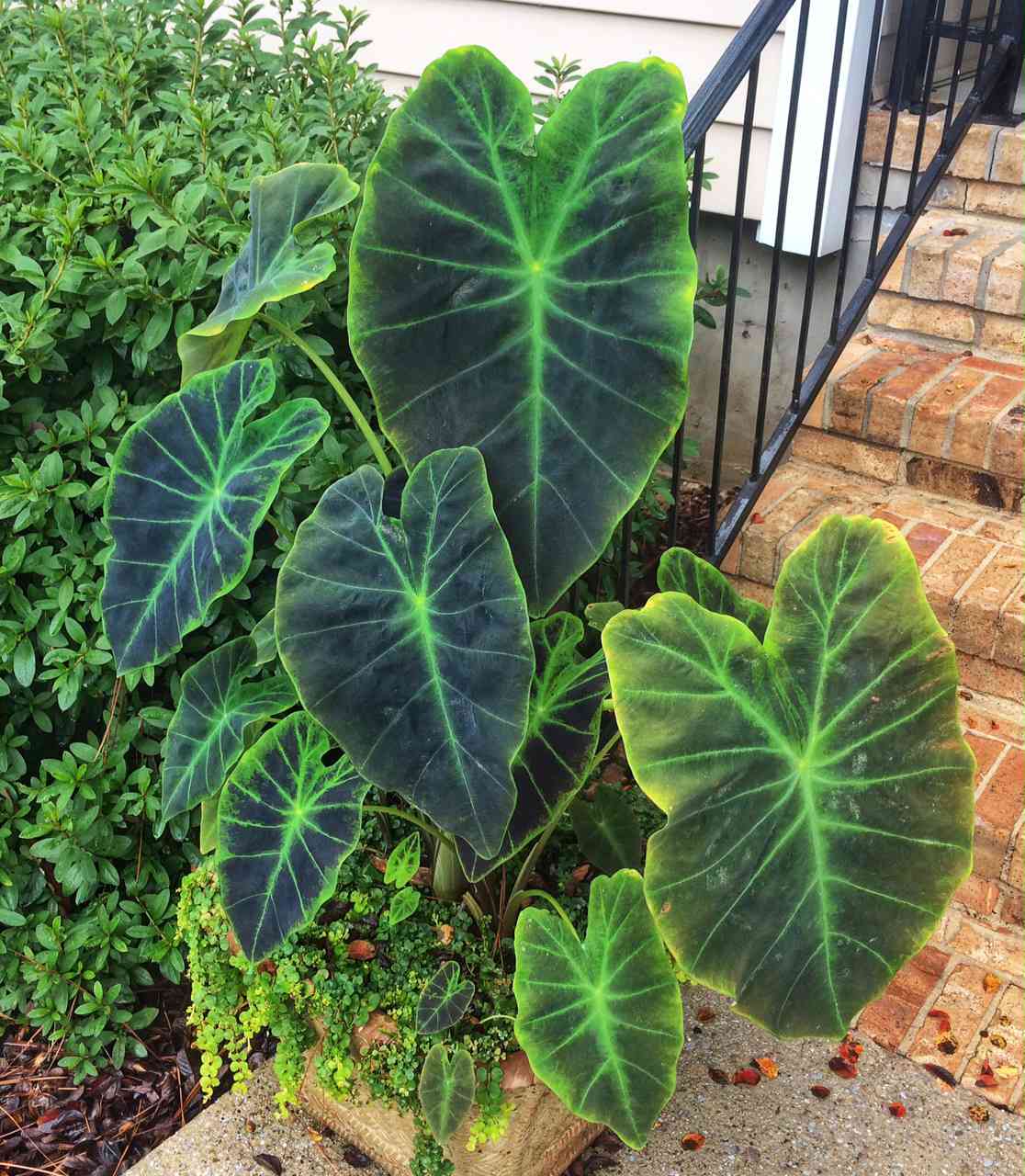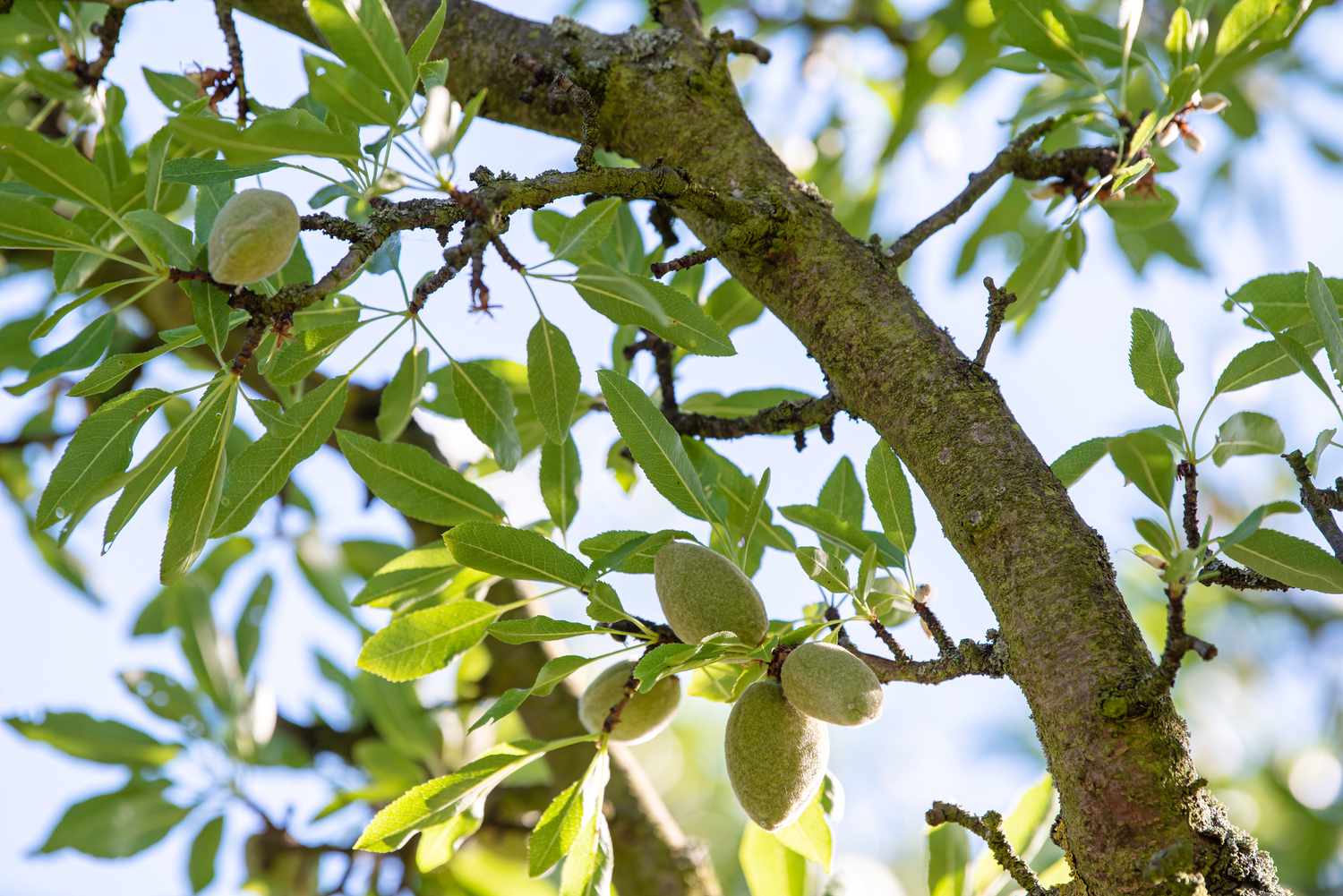How to Plant And Grow Elephant’s Ear: Easy Steps for Lush Growth

To plant and grow Elephant’s Ear, choose a warm, sunny location and well-draining soil. Water regularly and provide ample space.
Elephant’s Ear, known for its large, dramatic leaves, adds a tropical flair to any garden. These plants thrive in warm climates and prefer partial to full sunlight. Suitable for garden beds or large containers, they require rich, well-draining soil to flourish.
Regular watering is essential, but avoid waterlogging the soil. Allow ample space for their expansive growth, as they can reach impressive heights. Ideal for creating a lush, exotic ambiance, Elephant’s Ear is relatively low-maintenance if provided with proper care. With the right conditions, these plants can become a stunning focal point in your landscape.
Introduction To Elephant’s Ear
Elephant’s Ear, known for its large, heart-shaped leaves, is a striking plant. It’s perfect for gardens and indoor spaces, adding a tropical touch to any setting. Growing Elephant’s Ear is simple and rewarding. This guide will cover the basics to help you start.
About The Plant
The Elephant’s Ear plant belongs to the Araceae family. Its scientific name is Colocasia, and it is native to Southeast Asia and India. The plant thrives in warm, humid environments.
Elephant’s Ear plants can grow up to 6 feet tall in the right conditions. Their leaves can reach up to 3 feet in length. The plant’s striking foliage makes it a popular choice for landscaping.
Popular Varieties
There are several popular varieties of Elephant’s Ear. Each has unique characteristics:
| Variety | Description |
|---|---|
| Colocasia esculenta | This is the most common variety. It has green leaves and grows well in wet areas. |
| Alocasia macrorrhiza | Also known as Giant Taro, it has glossy leaves and grows up to 12 feet. |
| Colocasia Black Magic | This variety has dark purple, almost black leaves. It adds a dramatic touch to gardens. |
| Colocasia Mojito | Known for its green leaves with dark splotches. It’s a unique and eye-catching variety. |
Choose a variety that suits your garden or indoor space. Each offers its own unique beauty and growth habits.

Choosing The Right Location
Planting and growing elephant’s ear requires careful consideration of the location. The right spot ensures the plant thrives and grows lush, large leaves. Below are some essential factors to consider for selecting the perfect location for your elephant’s ear.
Sunlight Requirements
Elephant’s ear plants need a good amount of light. They thrive best in partial shade. Too much direct sunlight can scorch their leaves. Aim for a spot where they get indirect sunlight for most of the day. If you live in a hot climate, ensure they get some shade during the hottest part of the day.
Soil Preferences
Healthy soil is crucial for the growth of elephant’s ear. They prefer moist, well-drained soil. The soil should be rich in organic matter. You can improve soil quality by adding compost or well-rotted manure.
Here is a simple table to illustrate the ideal soil conditions:
| Soil Type | Preference |
|---|---|
| Moisture | Moist, not waterlogged |
| Drainage | Well-drained |
| Organic Matter | High |
Ensure the soil pH is slightly acidic to neutral, around 5.5 to 7.0. You can test your soil pH using a home test kit. If needed, amend the soil to reach the desired pH level.
Preparing The Soil
Preparing the soil is a crucial step in planting and growing Elephant’s Ear. Good soil ensures healthy growth and vibrant leaves. Let’s dive into how you can prepare the soil for these stunning plants.
Soil Amendments
Elephant’s Ear thrives in rich, well-draining soil. To achieve this, consider adding organic matter such as compost or well-rotted manure. These amendments improve soil texture and fertility.
- Add compost to enrich the soil with nutrients.
- Use peat moss to improve soil structure.
- Incorporate perlite or vermiculite for better aeration.
Avoid using heavy clay soils. They retain too much water and can harm the plant roots.
Drainage Solutions
Proper drainage is essential for Elephant’s Ear. These plants dislike soggy soil. Ensure your planting site has good drainage to prevent root rot.
- Create raised beds to improve drainage.
- Mix in sand or gravel to the soil.
- Avoid planting in low-lying areas that collect water.
Consider using a drainage pipe or French drain for areas with poor natural drainage.
By following these steps, you create the perfect soil environment for Elephant’s Ear. Healthy soil leads to robust and beautiful plants.
Planting Elephant’s Ear
Elephant’s Ear plants are known for their large, heart-shaped leaves. These tropical beauties can turn any garden into a lush paradise. Let’s dive into how to plant them successfully.
When To Plant
Plant Elephant’s Ear in spring when the soil warms up. This ensures the best growth. The soil temperature should be at least 65°F (18°C). Planting too early can stunt their growth. Check your local last frost date to be sure.
Step-by-step Planting Guide
- Choose a Location: Select a spot with partial shade. Elephant’s Ear plants love indirect sunlight. Ensure the soil is well-draining and rich in organic matter.
- Prepare the Soil: Loosen the soil to about 12 inches deep. Mix in compost or aged manure. This provides necessary nutrients for the plant.
- Plant the Bulbs: Dig a hole about 4 inches deep. Place the bulb with the pointed end up. Cover the bulb with soil and water it well.
- Spacing: Space the bulbs about 2 to 3 feet apart. This gives each plant room to grow and spread.
- Watering: Keep the soil consistently moist. Water the plants deeply once a week. In hot weather, you may need to water more often.
- Mulching: Add a layer of mulch around the plants. This helps retain moisture and keeps the weeds away.
Following these steps will help your Elephant’s Ear plants thrive. Enjoy their magnificent foliage all season long!
Watering Needs
Elephant’s Ear plants need special attention to their watering needs. Proper watering keeps these tropical beauties thriving.
Watering Schedule
Create a consistent watering schedule for your Elephant’s Ear. Water them deeply once a week. In the summer, increase watering to twice a week.
Check the soil before watering. It should feel slightly dry to the touch. Use a moisture meter to check soil moisture levels.
Avoiding Overwatering
Avoiding overwatering is crucial for Elephant’s Ear health. Overwatering can lead to root rot. Ensure the soil drains well.
Water the plant until the soil is moist, not soggy. If water pools on the surface, you’ve added too much. Make sure the pot has drainage holes.
| Season | Watering Frequency |
|---|---|
| Spring | Once a week |
| Summer | Twice a week |
| Fall | Once a week |
| Winter | Every two weeks |
Follow these watering tips for healthy, lush Elephant’s Ear plants.

Fertilizing Tips
Healthy Elephant’s Ear plants need proper fertilizing. Understanding the right fertilizers and application frequency ensures your plants thrive.
Best Fertilizers
Choosing the right fertilizer is crucial for Elephant’s Ear growth. They benefit from fertilizers high in nitrogen, phosphorus, and potassium. Use a balanced 20-20-20 fertilizer for optimal results.
Here’s a table summarizing the best fertilizers:
| Fertilizer Type | Nutrient Ratio |
|---|---|
| Balanced 20-20-20 | 20% Nitrogen, 20% Phosphorus, 20% Potassium |
| Organic Compost | N/A |
| Fish Emulsion | High in Nitrogen |
Application Frequency
Apply fertilizers regularly for the best growth. During the growing season, fertilize every 2-3 weeks. Follow these steps:
- Mix the fertilizer with water as per the instructions.
- Water the soil around the plant base.
- Avoid direct contact with the leaves.
For organic options, use compost or fish emulsion monthly.
Always monitor your plants. Yellowing leaves may indicate over-fertilizing.
Pest And Disease Control
Keeping your Elephant’s Ear plants healthy requires vigilance against pests and diseases. This guide helps you manage common pests and prevent diseases. Healthy plants grow better and look more beautiful.
Common Pests
Elephant’s Ear plants attract several common pests. Understanding these pests is crucial for control. Here are some of the most common ones:
- Aphids: Small, soft-bodied insects that suck plant sap. They cause yellowing and stunted growth.
- Spider Mites: Tiny pests that create webbing on the leaves. They suck the plant’s juices, causing yellow spots.
- Mealybugs: White, cottony insects that cluster on stems and leaves. They weaken the plant by sucking sap.
- Snails and Slugs: These pests chew holes in leaves, leaving a slimy trail.
Control these pests with a few simple steps:
- Inspect plants regularly for signs of pests.
- Use insecticidal soap or neem oil for aphids and spider mites.
- Remove mealybugs by wiping leaves with alcohol-soaked cotton swabs.
- Set up snail and slug traps around the plants.
Disease Prevention
Elephant’s Ear plants are also susceptible to several diseases. Preventing these diseases ensures your plants stay healthy. Here are key diseases to watch for:
- Root Rot: Caused by overwatering and poor drainage. Roots become mushy and black.
- Leaf Spot: Fungal disease causing brown spots on leaves. Spots may have yellow halos.
- Powdery Mildew: White, powdery fungus on leaves. It thrives in humid conditions.
Follow these tips to prevent diseases:
- Ensure proper drainage to avoid root rot.
- Water plants at the base, not on leaves.
- Space plants to improve air circulation.
- Remove and destroy infected leaves immediately.
- Use fungicidal sprays if necessary.
Regular care and attention help keep your Elephant’s Ear plants pest-free and healthy. Happy gardening!
Seasonal Care
Elephant’s Ear plants require specific care throughout the year. Proper seasonal maintenance ensures their healthy growth. Below, we outline essential tips for both winter and spring care.
Winterizing Tips
Winter care is crucial for Elephant’s Ear plants. Follow these steps to protect them during colder months:
- Dig up tubers before the first frost.
- Clean the tubers by removing dirt and old roots.
- Let tubers dry for a few days in a cool, dark place.
- Store tubers in a box filled with peat moss or sawdust.
- Keep the box in a cool, dry place with temperatures between 50-60°F.
Spring Revival
Spring is the time to revive your Elephant’s Ear plants. Follow these steps to prepare them for the growing season:
- Inspect tubers for any signs of rot or damage.
- Plant tubers in well-draining soil after the last frost.
- Ensure the planting site gets partial to full sun.
- Water tubers thoroughly after planting.
- Apply a balanced fertilizer to promote growth.
By following these seasonal care tips, your Elephant’s Ear plants will thrive year after year.

Frequently Asked Questions
What Is The Best Soil For Elephant’s Ear?
Elephant’s Ear thrives in rich, well-draining soil. A mix of loam and organic matter works best. Ensure the soil remains moist but not waterlogged.
How Often Should I Water Elephant’s Ear?
Water Elephant’s Ear regularly to keep the soil consistently moist. During dry periods, water more frequently. Avoid letting the soil dry out completely.
Can Elephant’s Ear Grow In Full Sun?
Elephant’s Ear prefers partial shade to full shade. Too much direct sunlight can scorch the leaves. However, they can tolerate some morning sun.
How Do I Fertilize Elephant’s Ear?
Fertilize Elephant’s Ear with a balanced, slow-release fertilizer. Apply every 4-6 weeks during the growing season. Follow the product instructions for the best results.
Conclusion
Cultivating Elephant’s Ear is rewarding and straightforward. Follow the steps for healthy, vibrant plants. Enjoy their lush foliage in your garden. With proper care, these tropical beauties will thrive. Happy gardening!







2 thoughts on “How to Plant And Grow Elephant’s Ear: Easy Steps for Lush Growth”